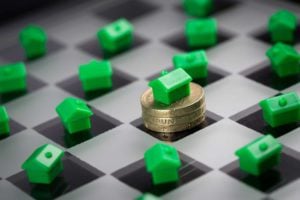In Victoria, all rental properties need to meet a set of living standards for tenants relating to amenity, safety and privacy. Does your property make the grade?
“A detailed risk assessment by a qualified inspector is a great way to ensure you are aware of any potential issues with your property,” says Kieran Davies, Head of Trades at RACV.
If an inspector identifies any issues that require fixing, RACV is well placed to assist landlords with not only a detailed Property Inspection and help to rectify most identified issues with qualified tradespeople through RACV Trades.
“This could be as small as installing a new lock on a side door, all the way to replacing a faulty heating unit to ensure your tenants are warm through winter,” says Kieran.
From the minimum standards, such as locks and structural soundness, to safety precautions, like gas and electrical, here’s a checklist landlords need to think about.
1. Gas safety
In Victoria, addition to meeting the general minimum standards for cooking and heating, new legislation means in landlords are required to conduct a full gas safety check by a licensed inspector every two years.
The safety check will include checking the condition and certification of different gas appliances and connections, as well as other potential safety hazards.
2. Electrical safety
Landlords are also required by law to ensure an electrical safety check is performed every two years at their rental property with an Electrical Safety certificate kept on record.
Does your rental home meet the new legal standards? Picture: Getty
Plus, from 29 March 2023, the minimum standards for a rental property in Victoria will include a modern-style switchboard, which includes circuit breakers and electrical safety switches.
So, if you’re not sure if your property meets the standards and is compliant with the new laws, book in a safety check from a licensed electrician.
3. Door locks
All external entry doors must have functioning dead latches or be fitted with locks that can be unlocked with a key from the outside but unlocked from inside without one.
4. Structural soundness
This one’s pretty straightforward: a property must be structurally sound, weatherproof and free from mould and damp.
Licensed inspectors identify urgent repairs and detail any required works to make a property safe. Picture: Getty
5. Vermin-proof bins
Landlords must supply tenants with both rubbish and recycling bins. The bins can be provided by the local council or purchased elsewhere, as long as they are vermin proof and meet council collection standards.
6. Suitable kitchen and bathroom facilities
Landlords must ensure their rental property provides adequate kitchen and bathroom facilities.
In kitchens, this includes a dedicated cooking and food preparation area, a sink in good working order connected to hot and cold water, as well as a working stovetop that has two or more burners.
Rental properties must provide adequate kitchen and bathroom facilities. Picture: Getty
Bathrooms must offer a washbasin and a bath or shower, including a shower head with a three-star water efficiency rating, or one- or two-star rating in older properties.
7. Ventilation and heating
Rental properties must have adequate ventilation in all rooms, including the bathroom, shower, toilet and laundry.
Landlords also need to provide the property with a fixed heater in good working order in the main living area. From 29 March 2023, the heater must also meet energy efficiency standards.
RACV can assist landlords with a broad range of tradespeople. Picture: Getty
8. Windows and window coverings
All external windows in a rental property that can be opened must be both lockable and able to be left open or closed. If the window can’t have a lock fitted, it must have a functioning latch to keep it closed.
As of March 2022, windows in rooms likely to be used as bedrooms or living areas must be fitted with curtains or blinds that can be closed, block light and provide privacy.
9. Lighting
Inside rooms, corridors and hallways must have access to light to make the areas functional for the renter.
During the day, natural light can include light borrowed from an adjoining room. At night, renters should have access to artificial light.





